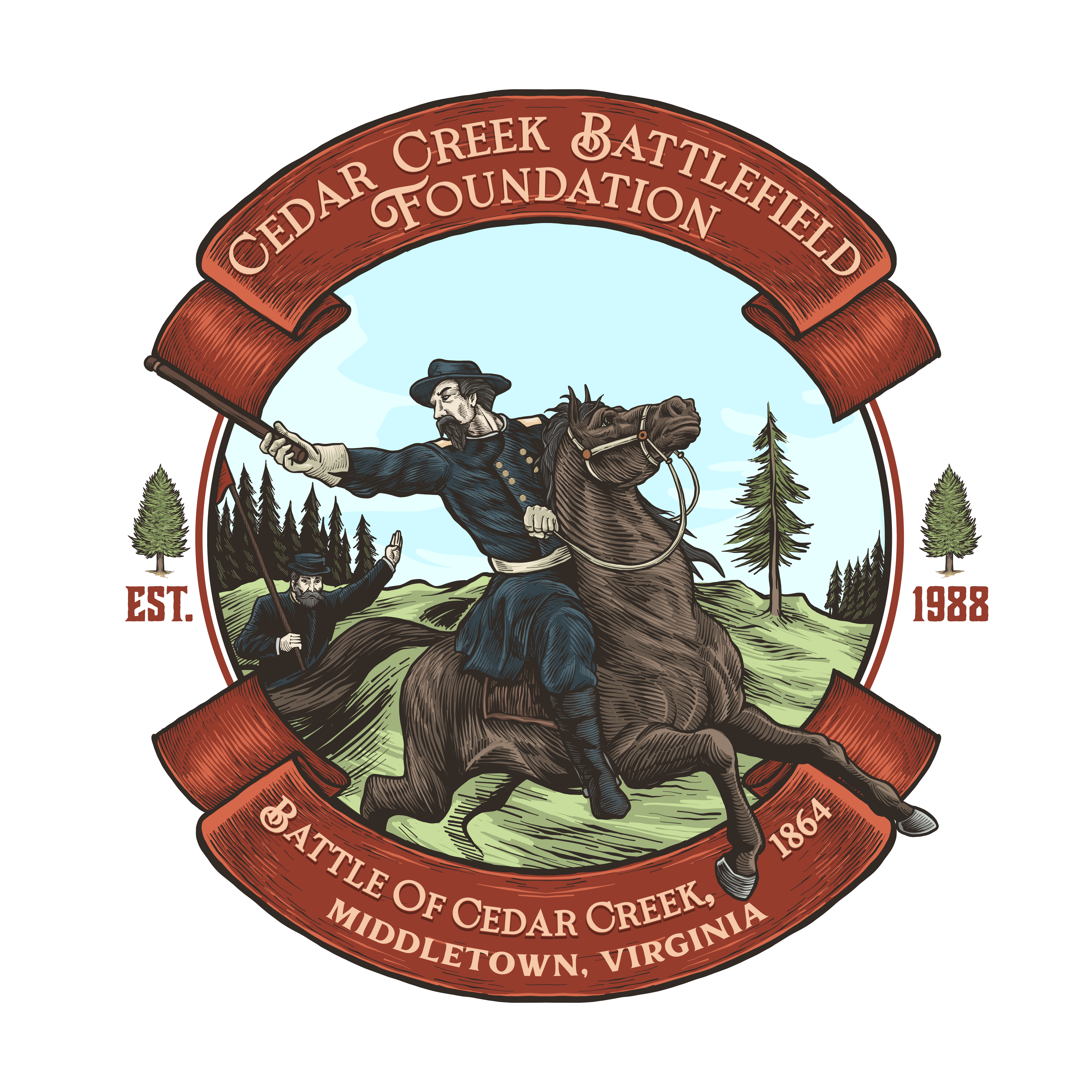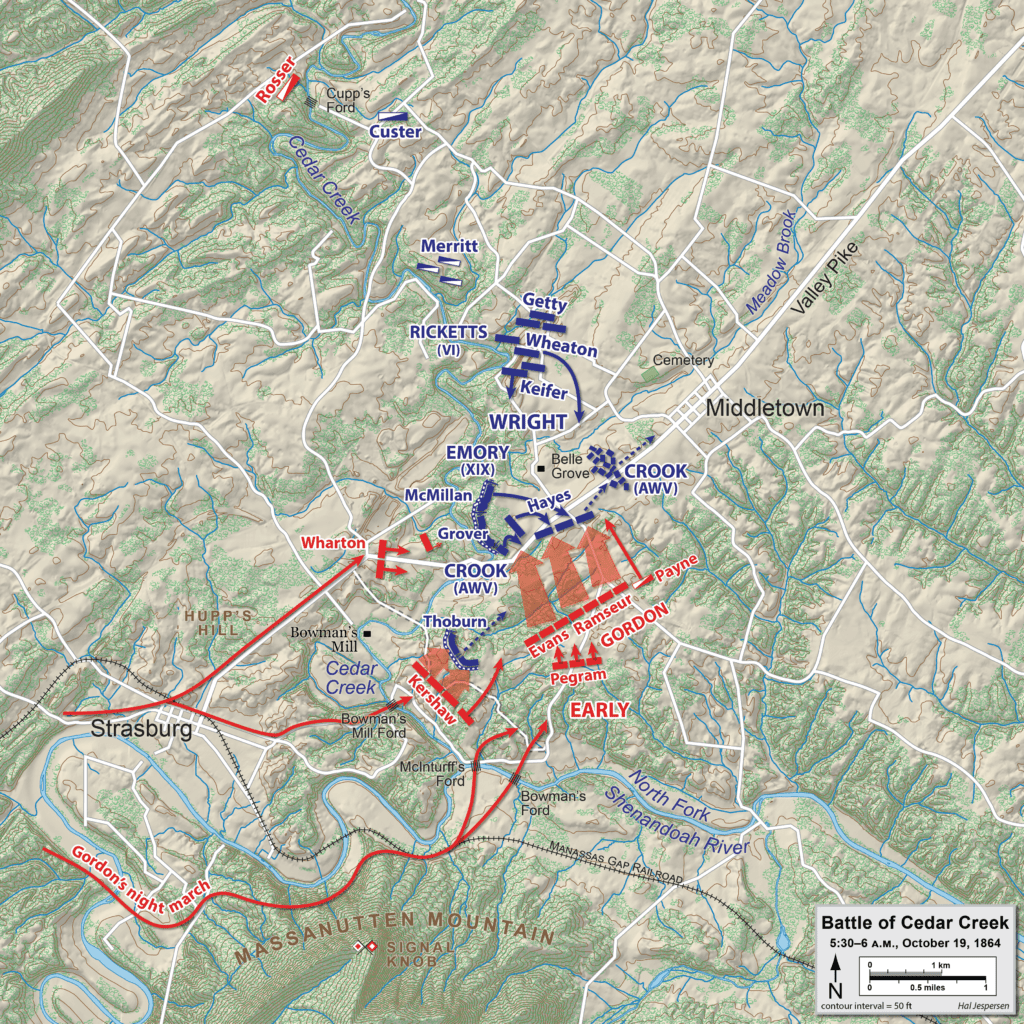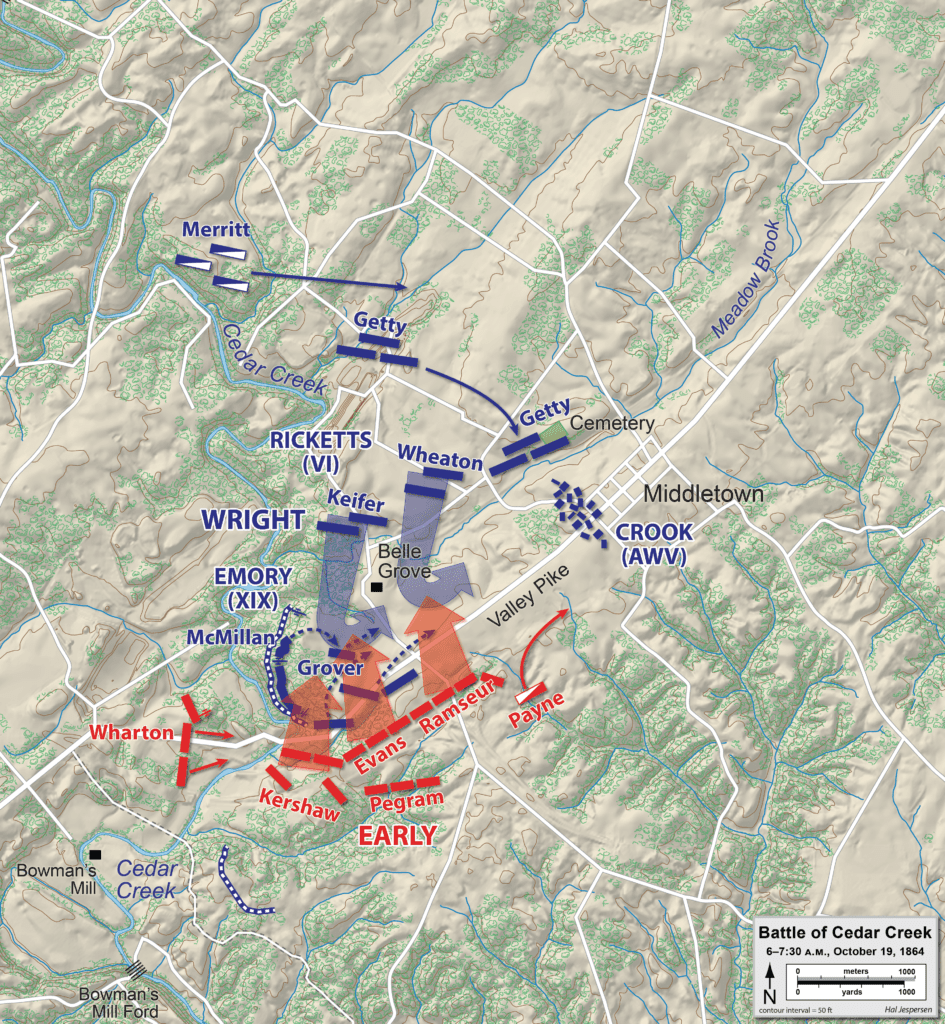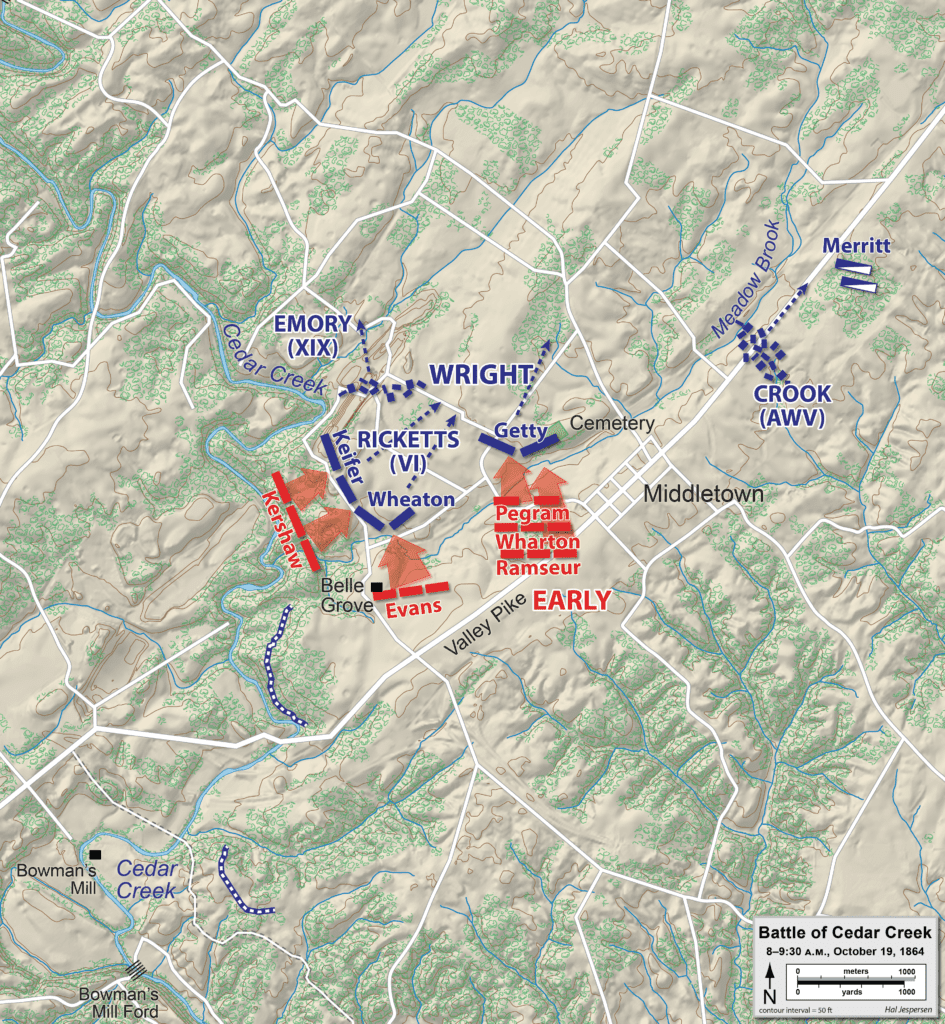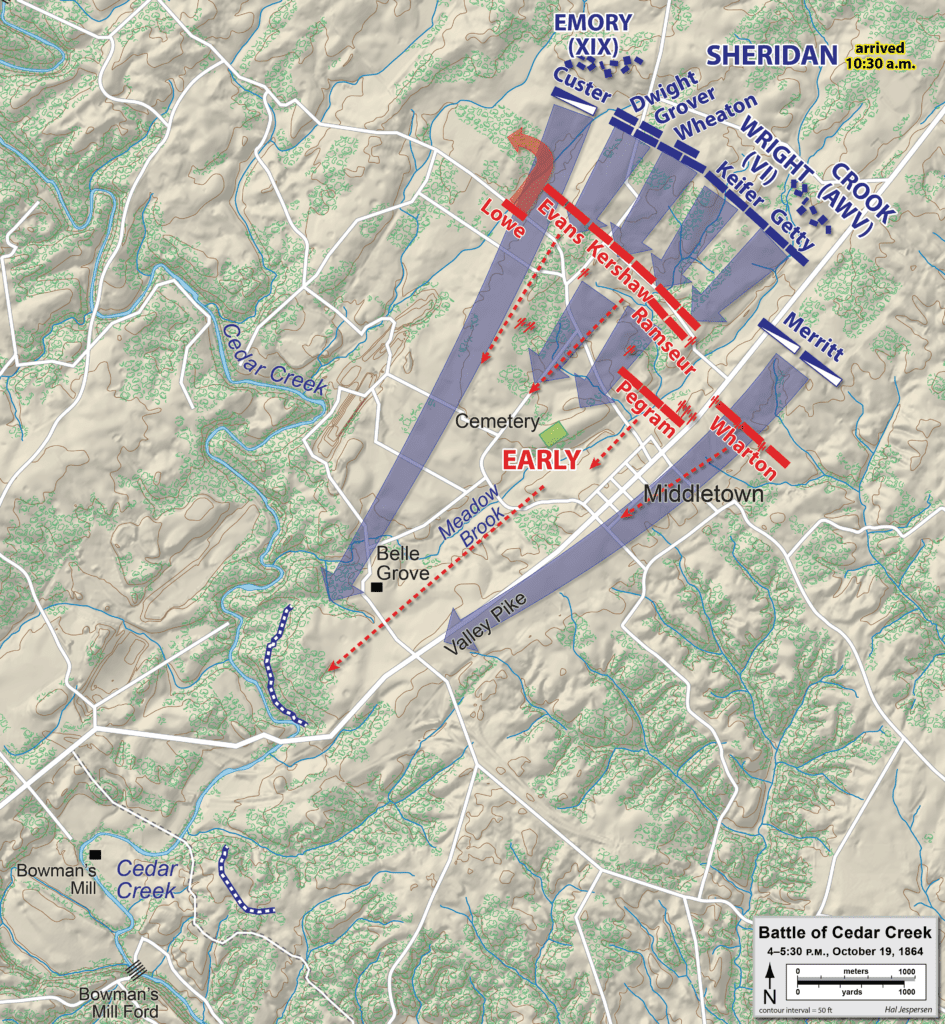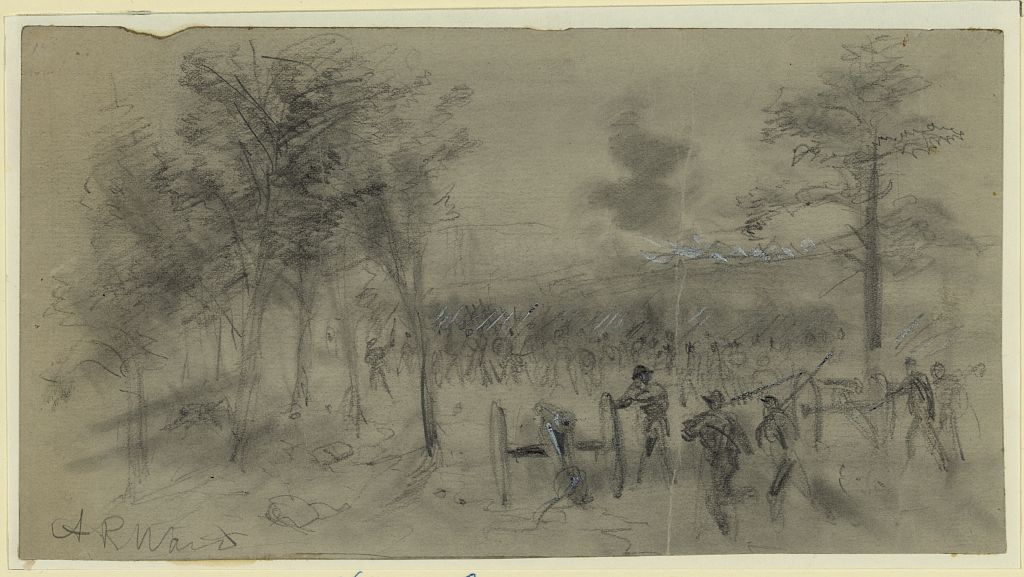The Battle of Cedar Creek
October 19th, 1864
The Last Major Battle in the Shenandoah Valley During the Civil War, 1861 - 1865
“This is glory enough for one day.” - Confederate General Jubal Early in the morning at Cedar Creek
Ulysses S. Grant, appointed General-in-Chief by Abraham Lincoln in March 1864, assigned command of the newly formed Army of the Shenandoah to Philip H. Sheridan in the summer of 1864. The Army of the Shenandoah, named for the Shenandoah River that flows through the region, consisted of the XIX (19th), VI (6th), and VIII (8th) Corps, and the Cavalry Corps. In total, this army was composed of just under 32,000 men. By contrast, Confederate Lieutenant General Jubal A. Early’s forces of the Army of the Valley fluctuated between 11,000 and 16,000 men during the 1864 campaigns.
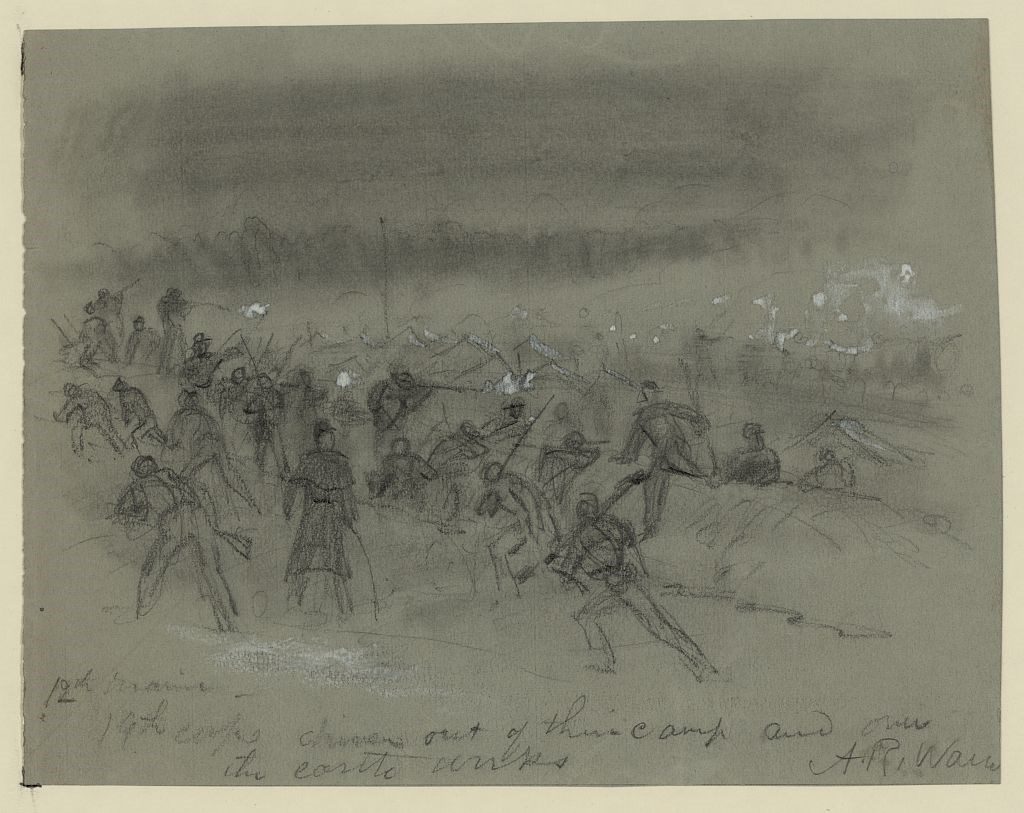
The Federal Army of the Shenandoah, having soundly defeated the Confederate Army of the Valley at Winchester (September 19, 1864) and again at Fisher’s Hill (September 22, 1864), forced the withdrawal of the Confederate forces deeper into the Shenandoah Valley. By October, the Federal army had campaigned south up the Valley either burning or appropriating food reserves and livestock between Staunton and Strasburg, thus nearly eliminating the Confederate army’s ability to sustain itself. Thinking he had finally denied the Valley to the Confederacy – both as a food source and as an invasion route to the North – Sheridan left his army camped along the Cedar Creek at Belle Grove Plantation in Middletown and traveled to Washington for consultations with Grant. On the morning of October 19th, Lieutenant General Jubal Early, with a force of about 21,000 soldiers, launched a 5:00AM surprise attack on the sleeping Federal army of 32,000. Attacking from the East, instead of the South as would have been expected, his five Divisions emerged from a dense morning fog.
See the original Reverse the Trenches artwork on display at the Cedar Creek Battlefield Foundation Museum!
Prints are also available in our Gift Shop!
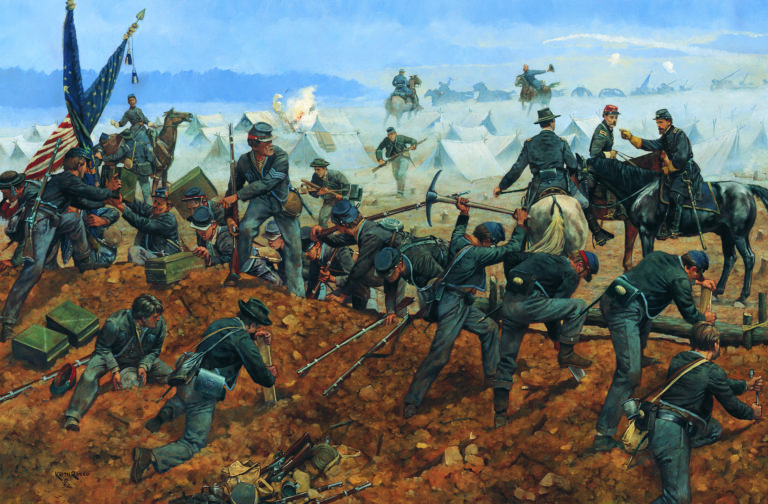
The fog and the rising sun disoriented the Federals, blinding them and concealing the fight as it approached. In the confusion, the Federals were driven from their camps, past Belle Grove Plantation, and northwest of Middletown. The Confederates saw some fierce pockets of resistance northwest of the plantation house and on the hill of Mt. Carmel Cemetery above Middletown. At midday, Early halted his forces at the northern edge of Middletown to consolidate his victory and regroup. Having been marching and fighting since 1:00AM, the strain of battle was beginning to take its toll on the Confederate advance. Early’s provision-deprived troops took time to loot and scavenge as they overran the Federal camps which were abundant with supplies and food, thus losing focus on the fight still raging in other parts of town. Save for some exceptions, the Union force was in a disorganized retreat from the field. Declining to heed the advice of his staff to pursue the retreating Federals to ensure their withdrawal from the Valley and believing his forces had won a resounding victory, Early declared, “This is glory enough for one day.”
Maps courtesy of Hal Jespersen, www.cwmaps.com.
Sheridan had returned to Winchester on October 18th. The next morning, the sound of cannon coming from the south echoed down the Valley and reached Winchester. After quickly concluding this was not just the sounds of a distant skirmish, he made a hard ride by horseback, about 12.5 miles, up the Valley to take command of his army. When he arrived, Sheridan discovered his men being organized to make a retreat northward. He halted this action, rode up and down their positions to show that he had returned ready for battle, and ordered them to reform their lines. These actions would later be celebrated in poetry and song as Sheridan’s Ride, making Sheridan a legendary figure of the Civil War.
When scouts reported that no Confederate reinforcements were coming, Sheridan launched a counterattack at approximately 4:00PM. The thunderous noise of 7,500 horses of the Federal cavalry, led by General George Armstrong Custer and General Wesley Merritt, descended on the Confederate forces. The Cavalry flanked the right and left of the Confederate line while the infantry broke through the center. The Confederate forces were overwhelmed by these combined actions and were left with only one option – to withdraw southward. During their retreat across the Cedar Creek and through Strasburg, a small but crucial bridge along their route on the south side of Strasburg collapsed, causing the loss of a substantial number of supplies, captured artillery, and ambulances.
Union casualties – killed, wounded, and missing – totaled over 5,000. Confederate losses were just over 3,000. The reversed outcome of this battle ended Jubal Early’s military career, lifted the pall of war-weariness from the North, helped assure the reelection of President Abraham Lincoln in November of 1864, ended Southern hopes for a negotiated settlement of the War, shattered the possibility of any large-scale Confederate resistance in the Valley, and freed Sheridan and his army to participate in the final siege of Richmond. In addition, it claimed the lives of two highly respected officers – Stephen Dodson Ramseur of North Carolina (CSA) and Charles Russell Lowell of Massachusetts (USA) – while sparing those of future U.S. presidents Rutherford B. Hayes and William McKinley, as well as that of George Armstrong Custer, who is best known for his activity in the western territories after the Civil War.
